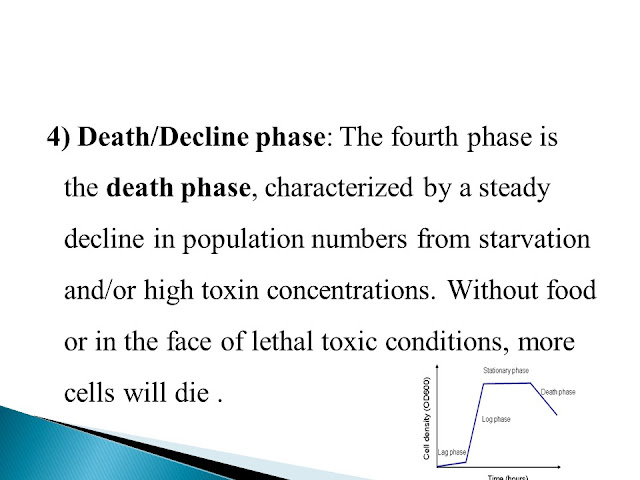Microorganism in food
MICRO ORGANISMS IN FOOD
General characteristics
• Bacteria
are minute unicellular plant like microorganisms. The length of bacterial cell
is about 1um and smaller than this in diameter. Bacteria are classified
according to the shapes of their shells. Cocci is spherical in shape, bacilli,
elongated cylindrical forms, spiral, they can pass through natural pores of
foods. Bacterial spores are seed like and they are more resistant to most processing
conditions than yeast or mold spores.
• Bacteria
with few exceptions, cannot grew in media as acid as those in which yeast and
mold thrive. They multiply by cell division. Under favourable conditions
bacteria can double their number every 30 min. Some bacteria cannot tolerate oxygen
(anaerobes) and some require oxygen for growth (aerobes). Some can grow in an
atmosphere devoid of oxygen but manage also in air (facultative anaerobes)
Microorganism Types of microorganism
 |
| Types of bacteria |
 |
| Structure of bacterial cell |
 |
| Forms of bacteria |
 |
| Reproduction of bacteria |
 |
| Bacterial growth cycle |
 |
| The Lag phase |
 |
| The log phase |
 |
| The stationary phase |
 |
| The decline phase |
 |
| Types of fungi |
YEAST
Yeast are unicellular plants(fungi) widely distributed in
nature and they grow well in slightly acid medium in the presence of sugar and
water they are found in fruits, cereals and other food containing sugar. They
are also found in soil, air, on the skins and in the intestine of animals. They
are larger than bacteria. The individual cell length is about 10um, and the
diameter is about 1/3rd of this size. Most yeast is spherical and ellipsoidal.
They have been used for centuries for leavening of bread and to bring about
fermentation of food usage they can be harmful to foods if they bring about
undesired fermentation.
MOULDS
Moulds are multicellular filamentous fungi having a fuzzy or
cottony appearance Cohen they grow in foods. They are larger than yeast. They
are strictly aerobes and require oxygen for growth and multiplication. They
grow slowly than bacteria. Moulds frequently threw under conditions of acidity
or of osmotic pressure. Those are inhibitory to most bacteria. That is why they
are found on jams and jellies moulds require less free moisture for growth than
yeast and bacteria the absence of bright light and presence of stagnant air
favour their rapid development.
VIRUS
The viruses are extremely small ranging from 25-250um in
size. although they share some characteristics with living organisms, they are
not truly alive. They replicate inside a living cell using its host cells
metabolism.
There are no of ways by which viruses may be transmitted
most common of this is via direct or distance contact i.e., from host to host
by touching or through short distance in air. Indirect transmission may occur. Also,
via contact with inanimate objects (fomites), by the bite of certain infected
insects (vector) by water and food (vehicles) There are variety of ways in
which viruses May entre foods.
1. Primary
when the food product already contain virus at the time of slaughter or harvest
or
2. Secondary
when it occurs during processing, storage or distribution of a food.
PARASITES
Ingestion of raw or semi-cooked food by humans can lead to
infection by parasites. Food like pork, beef, lamb, shellfish, vegetables act
as vehicles for infection.
The organism contaminated food when raw human excreta are
used as for crops. Infected water poor hygiene also spread parasite. Cooking
kills most of these parasites.
FACTORS
AFFECTING GROWTH OF MICROORGANISMS
TEMPERATURE
Microorganisms have optimum growth temperature. They do not
grow above or below a specific range of temperature. Bacteria can grow and
survive under more extreme conditions than those tolerated by any of the molds
or yeasts.
Bacteria are classified as: -
• Psychrophiles
– 68o-77oF (45oF) (0-20oC)
• Mesophiles
– 98oF (20-45oC)
• Thermophiles
– 110oF (45-60oC)
• Moulds
can grow and can survive under more extreme conditions than can the yeasts.
WATER
Microorganisms grow in aqueous solutions. A term, “water
activity (aw)” express the degree of availability of water in foods. Foods with
high water content deteriorate fast. Leafy vegetables, fruits, meat, milk
deteriorate rapidly. Fruits & vegetables can give of moisture from
respiration & transpiration even when packed in a moisture free package.
This moisture is enough for microorganisms to grow.
PH (HYDROGEN ION CONCENTRATION)
Moulds, yeast grow best at PH on the acidic side of
neutrality as do some bacteria. Many species of bacteria grow at PH which are
at neutrality or slightly on alkaline side. Extreme PH for bacteria
NUTRITIONAL REQUIREMENTS OF MICROBES
Microorganisms especially bacteria vary greatly from species
to species. In the presence of some inorganic salts some bacteria can utilize
the nitrogen in air to form proteins and carbon dioxide in air to obtain energy
they also use lactates as source of energy. Moulds and yeast like bacteria
require basic elements – carbon, hydrogen, nitrogen, phosphorus, sodium,
Sulphur etc. as well as vitamins & other organic compounds.
OXYGEN REQUIREMENT
Some bacteria are aerobic that is they require oxygen for
growth. Some both presence and absence (facultative aerobes/ anaerobes)
bacteria that do not require oxygen – anaerobes Molds & yeast require.






Comments
Post a Comment